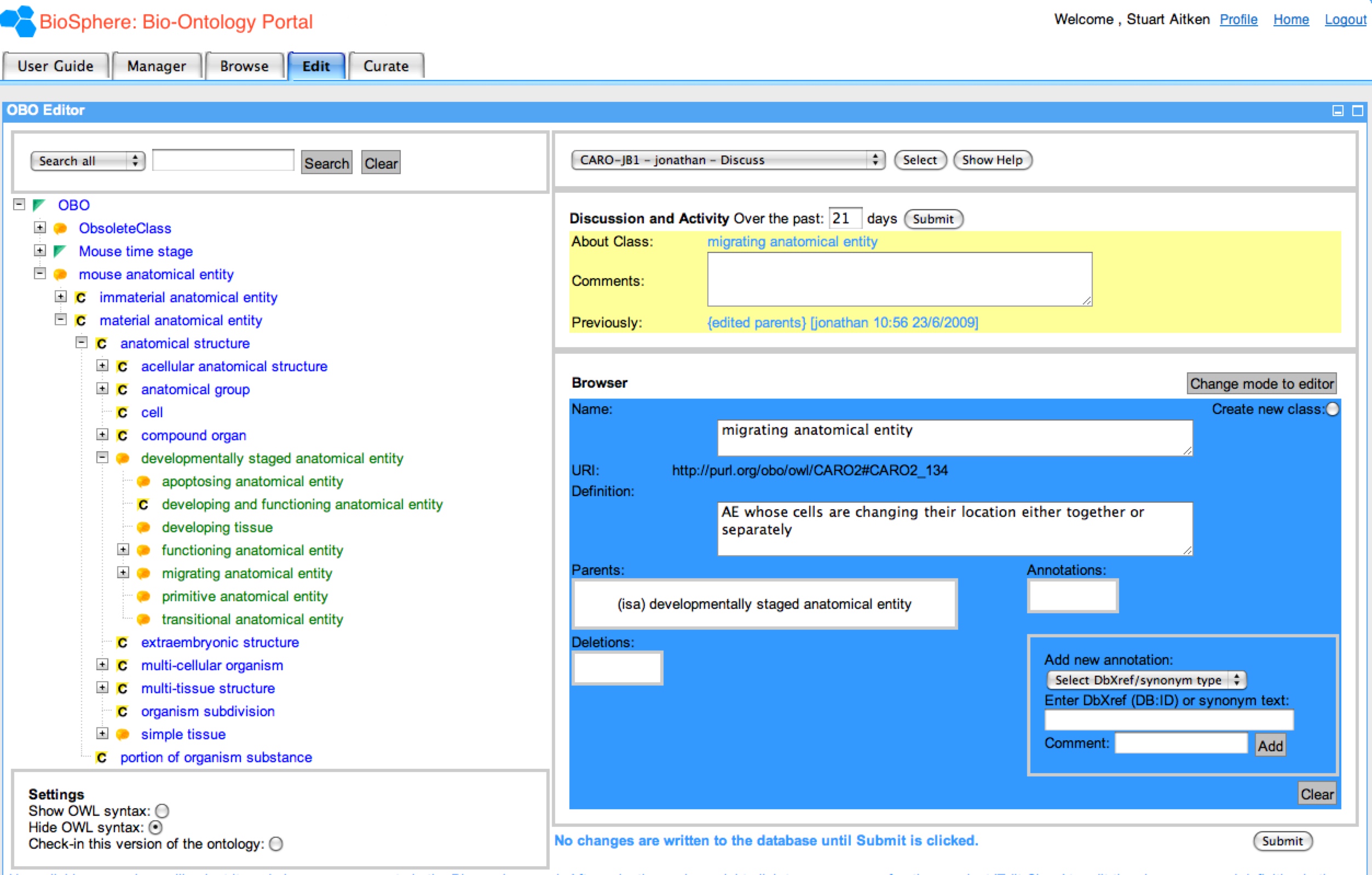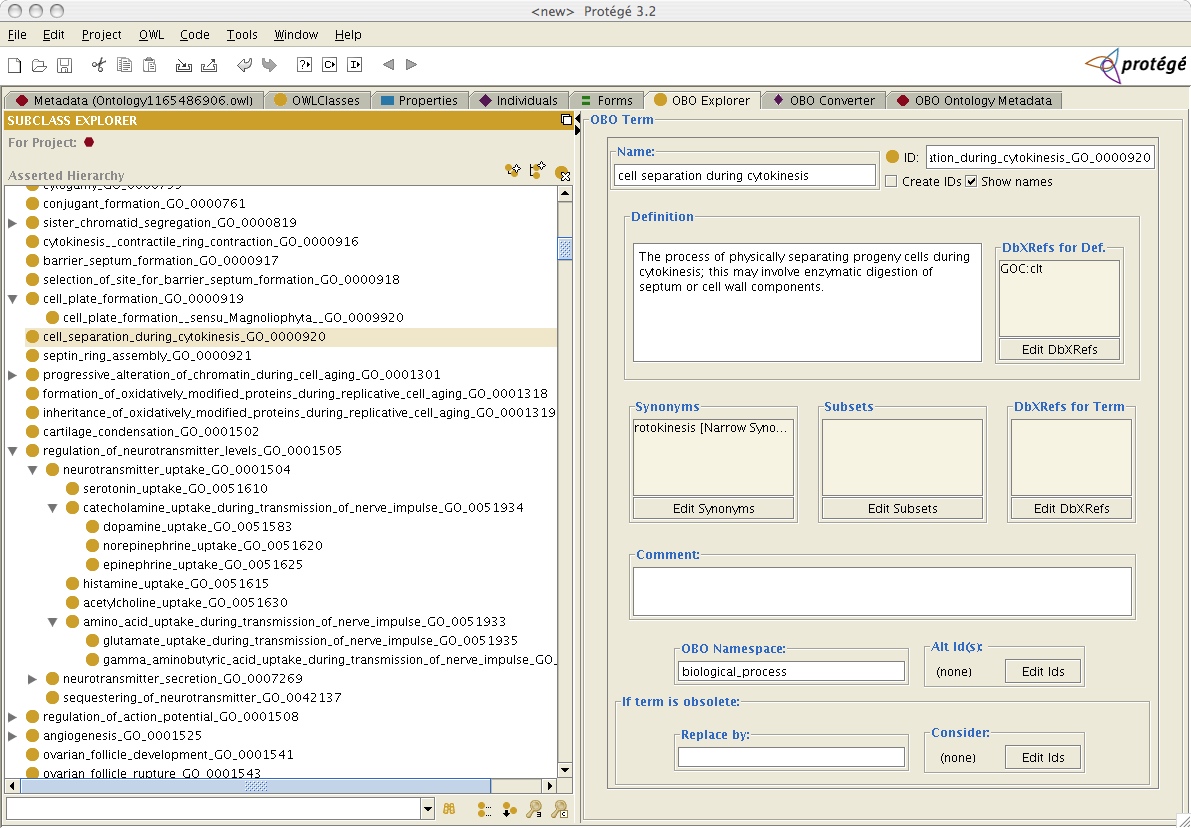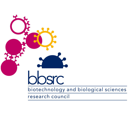BioSphere ontology portal
The
BioSphere portal
http://www.biosphere-portal.org
allows bio-ontologists to collaboratively develop and share ontologies.
The editor and the community management tools are accessed via a web browser.
This central server replaces desktop editors, and does away with the need to exchange files by email.
The portal also supports discussion and commenting on classes in the ontology.
User's suggestions can be incorporated into the group version,
a task that is currently assigned one of the curators of the ontology.
Efficient XML methods for efficiently storing and manipulating OWL 2
ontologies have implemented to support multi-user editing.
A distinction is made between each user's view, and the group's
collective view: Both are stored in a single OWL 2 XML document
that can be queried to obtain a specific version for each user and for the group.
Modelling curation and annotation
The curation of biological data is being studied by Luna De Ferrari, who is interested in the use of Wikis to address problems of scale in the annotation of biological data - manual curation simply cannot keep up with the volume of biological data now being produced. Authorship metrics in open (EcoliWiki and WikiPathways) and closed (OMIM and Reactome) have been analysed and show surprising similarities; and agent-based modelling has been used to understand how knowledge may be acquired in open systems.
Ontology editors
The ontology portal approach arose from the experience of the earlier
COBrA-Curation Tool project that produced the OBO Explorer (image centre right),
and from the COBrA editor, a product of the XSPAN
project (both supported by the BBSRC).
The original COBrA tool was developed by Roman Korf
(thesis)
In XSPAN, anatomies of
model species, together with cell-type knowledge defined
in ontologies, were used as the basis for describing
cross-species mappings which identify homologous tissues. Knowledge of
analogous and homologous tissues in different species is key to
investigations of gene expression.


